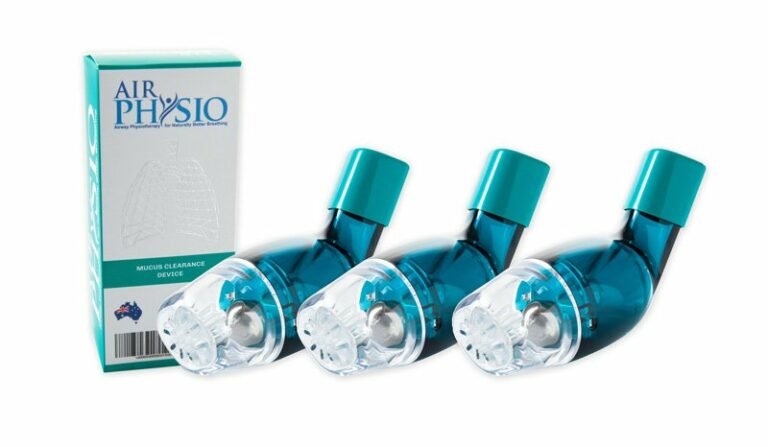Why Lung Health Matters on World MS Day – And Every Day
Each year on May 30, the world unites to recognise World MS Day – a powerful movement that brings together the global Multiple Sclerosis (MS)
Asthma comes from the Greek word ἅσθμα or asthma, which means panting. It is a common chronic inflammatory disease of the airways, the small tubes which carry air in and out of the lungs.
When you have asthma symptoms, the muscles in the airways tighten, and the lining of the airways is inflamed, which causes swelling, which is then protected using by the production sticky mucus over the airway. Although the production of mucus is used by the body to protect the inflamed areas of the airway, this has an adverse effect of causing the airways to become narrowed, so that there is less space for air to flow into and out of your lungs. An excess amount of mucus can actually cause the partial closure of the airways and/or pooling of mucus in the lungs.
There are other heart condition which are commonly diagnosed as Asthma which is actually a coronary condition. One of these includes right-sided heart failure. These conditions are an issue where the heart isn’t transferring the carbon dioxide and oxygen between the heart and the lungs effectively, but the brain reads this that the lungs aren’t working properly. Over a long period without treatment, this may lead to failure of the lungs due to being overworked. Please consult your doctor about this.
Asthma is thought to be caused by a combination of genetic and environmental factors. There are many different triggers for asthma, and these can be different for different people.
The most common ones are:
Common symptoms include:
These symptoms differ from person to person and can range from mild to severe. Generally, they tend to be worse during the night and early in the morning.
For most people, the risk of developing Asthma is approximately 5%; however, the condition tends to be genetic, increasing the risk to approximately 25% if either parent is a known sufferer.
Asthma is incurable; however, if managed in the correct way, there is no reason why an asthma sufferer cannot live an active life. If left untreated, the mucus build-up from asthma may lead to Atelectasis, which is the partial blockage or closure of part of the lungs.
A person with COPD needs to make a number of important lifestyle changes, including:
Quit smoking – techniques can include ‘cold turkey’, counselling, nicotine replacement therapy and medications that work on brain receptors. Evidence shows that counselling, together with medical therapy, is most effective.
Increase Physical Activity – try to be as physically active as possible. If possible, attend pulmonary rehabilitation, similar to using the AirPhysio device.
COPD Action Plan – Follow a COPD action plan.
Change Diet – Eat a healthy diet and try to avoid foods with possible irritants, as mentioned in the asthma article.
Plenty of Rest – Make adjustments to your lifestyle and home environment to ensure plenty of rest.
Improve Hydration – Keep adequately hydrated to help keep the mucus in your lungs runny and easier to cough up.
Avoid Irritants – Avoid smoky, dusty, pollen or environments with other irritants.
Join a support group – call Lung Foundation Australia (Tel. 1800 654 301) for information on a support group close to you.
By using the AirPhysio device to clean the airway and condition the lungs, this will assist in the maintenance of Asthma.
AirPhysio assists in 2 distinct ways:
1. Firstly the clearance process of AirPhysio assists in clearing any blockage or build-up of excess mucus through the 2 stage mobilization and elimination method.
2. Secondly, the vibration or flutter effect of the AirPhysio, including the deep breathing method assist in conditioning the airway and assists to improve lung capacity through a physiotherapy method of exercising the lungs, similar to exercise.
For more information about Asthma, please refer to the following web pages and articles:
National Asthma Council
The Global Asthma Report
asthma.org.au
Manage your asthma
Each year on May 30, the world unites to recognise World MS Day – a powerful movement that brings together the global Multiple Sclerosis (MS)
Asthma is more common than many people realise — affecting over 262 million individuals around the world. Yet despite how many lives it touches, asthma
In the pursuit of optimal respiratory health, understanding and implementing techniques like Chest Percussion can be a game-changer. This method, designed to enhance lung function
AirPhysio may be able to help by assisting with
✅Clearing the mucus clogging airways
✅Helps Promote Optimal Lung Capacity
✅Helps Promote Optimal Lung Hygiene
✅Helps treat Respiratory Conditions
✅May Reduce the chance of developing lung infections
✅Recommended by doctors, physical Therapists & Pulmonologists
✅Helps Make Breathing Easier
✅Sold in 106 countries globally


Do you suffer from Dry or Persistent Cough, Breathlessness, Respiratory or Severe Respiratory Conditions, or Shortness of Breath as you Get Older?

THIS PRODUCT MAY NOT BE RIGHT FOR YOU. READ THE WARNINGS BEFORE PURCHASE (Contraindications of Untreated pneumothorax; Tuberculosis; Oesophageal surgery; Right-sided heart failure; Middle ear pathology, such as ruptured tympanic membrane)
FOLLOW THE DIRECTIONS FOR USE
IF SYMPTOMS PERSIST, TALK TO YOUR HEALTH PROFESSIONAL

Gallery
AirPhysio is an Oscillating Positive Expiratory Pressure (OPEP) device that is used for mucus clearance and lung expansion to help in the treatment of respiratory conditions. The use of the AirPhysio device helps to facilitate secretion mobilization and maximize lung volume for cleaner healthier lungs.
© AirPhysio 2022 – All Rights Reserved
| Cookie | Duration | Description |
|---|---|---|
| cookielawinfo-checkbox-analytics | 11 months | This cookie is set by GDPR Cookie Consent plugin. The cookie is used to store the user consent for the cookies in the category "Analytics". |
| cookielawinfo-checkbox-functional | 11 months | The cookie is set by GDPR cookie consent to record the user consent for the cookies in the category "Functional". |
| cookielawinfo-checkbox-necessary | 11 months | This cookie is set by GDPR Cookie Consent plugin. The cookies is used to store the user consent for the cookies in the category "Necessary". |
| cookielawinfo-checkbox-others | 11 months | This cookie is set by GDPR Cookie Consent plugin. The cookie is used to store the user consent for the cookies in the category "Other. |
| cookielawinfo-checkbox-performance | 11 months | This cookie is set by GDPR Cookie Consent plugin. The cookie is used to store the user consent for the cookies in the category "Performance". |
| viewed_cookie_policy | 11 months | The cookie is set by the GDPR Cookie Consent plugin and is used to store whether or not user has consented to the use of cookies. It does not store any personal data. |
4 Responses
Do you mind if I quote a couple of your articles as long as I provide credit and sources back to your blog?
My website is in the exact same niche as yours
and my visitors would genuinely benefit from a lot of the information you present here.
Please let me know if this okay with you. Many thanks!
Hi Hell,
Please feel free to contact me at [email protected] and we can talk off line to see what value we can provide to help both of our readers and customers.
Kind Regards
Paul
My son is 7 and has asthma. Can he use it?
Yes they can.